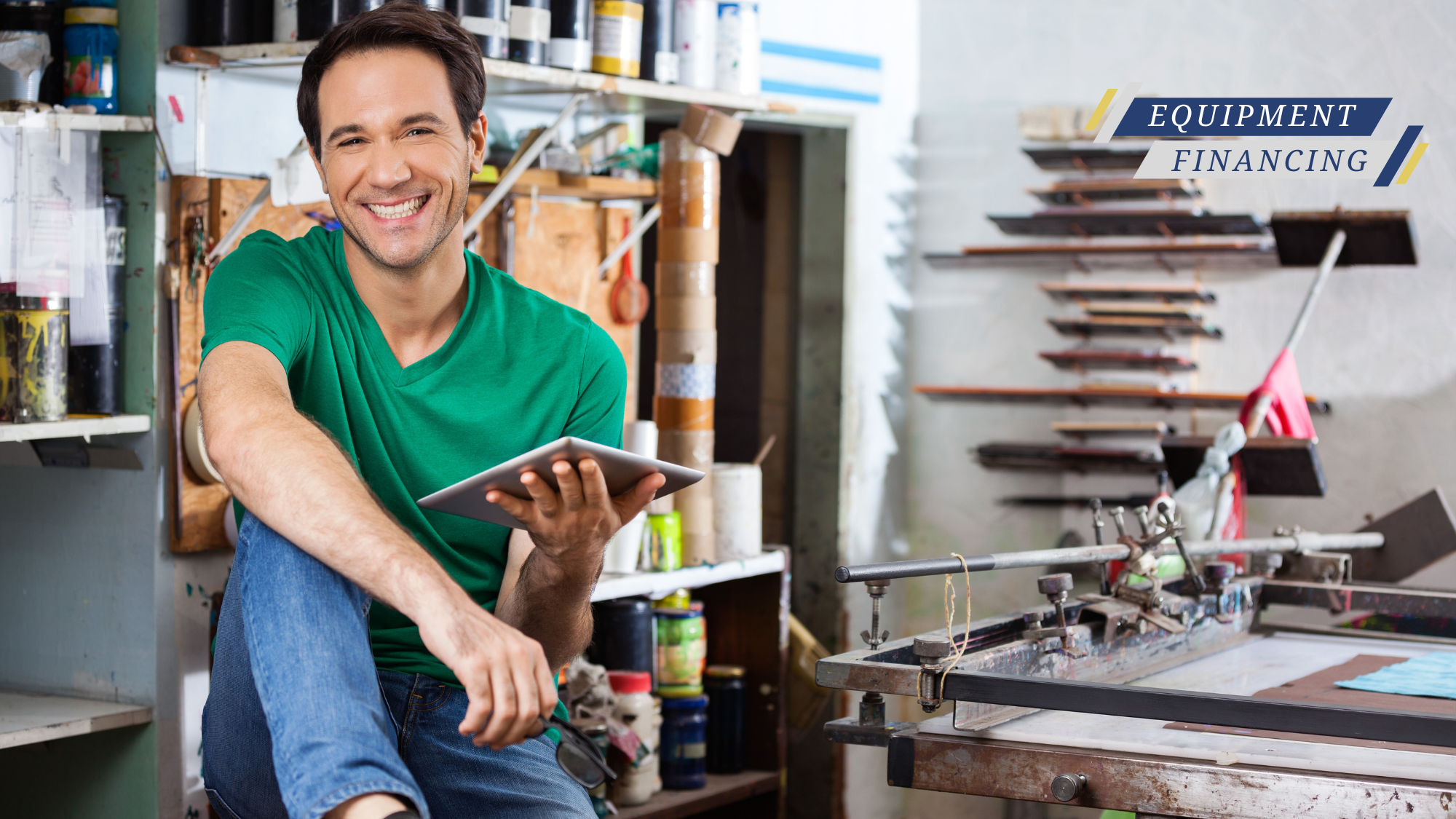Typically, no one talks about Section 179 until Q4. That’s when all of the equipment dealers start to encourage you to take advantage of some very real savings on taxes based on Section 179 of the IRS Tax Code.
And they do that because it’s a way to encourage business owners like you to buy equipment before the end of the year. This is exactly the reason that piece of tax legislation was enacted; to boost the economy by encouraging capital equipment purchases.
But the truth is, you don’t need to wait. Because the IRS doesn’t care if you bought in January, June, or December – just that it went into service that year!
Quick notes:
- Section 179 allows businesses to deduct 100% of the cost of equipment in the first year it was put into service. (Otherwise, you would depreciate it over five years, for example)
- Every year the IRS institutes yearly limits on how much one business can claim as Section 179, but it’s been over $1 million for years.
- Most customization, printing, embroidery, and other apparel decorating equipment meets the IRS guidelines.
- You’ll probably want to work with a qualified tax pro or CPA to be sure you’re claiming the deduction accurately. (It will be worth it)
- You can’t take this Section 179 deduction if it’s more than your taxable income (in other words, you can deduct more than you make!)
How it works
Depreciation, first of all, is an estimation of a decrease in the value of an asset, like a commercial embroidery machine, DTG printer, or high-volume DTF transfer printer.
And because the IRS realizes that the value of equipment generally goes down – over its “useful life” – it allows small businesses to cost basis over time. So they’re saying, “If you buy a piece of equipment that’s worth less over time, you can reduce your taxes over time to help make up for that loss.”
It used to be that they would assume it took five years of deductions to help offset the decline of the equipment in utility or until it needed to be replaced.
Section 179 lets you take all of that deduction in the first year.
So, when you buy that commercial equipment for $20,000 this year, you can take all your depreciation deductions this year too. Here’s how most 179 calculators show it:
Examples of 179 Savings
Online Section 179 calculators have one purpose: to illustrate the impact of the deduction on buying new equipment and make the equipment cost look lower.
Which is a completely legitimate way to look at it.
But in maximizing the apparent impact of the deduction, they will invariably use the highest tax rate they can. Because the way they work is to simply do the following math:
Cost of the equipment x Tax % (based on your tax bracket) = Savings
Then they deduct the savings from the cost of equipment to show how much the equipment “really” costs.
$20,000 equipment purchase example
- Cost of Equipment = $20,000
- Assumed tax bracket = 35%
- Tax Savings = $7,000
- Equipment Price = $13,000
But the truth is, you probably aren’t in the 35% tax bracket.
Tax brackets and Section 179
Yes, you COULD be. There’s nothing wrong with this calculation or using 35% as a sample number because the financing companies or leasing vendors offering the calculators can’t know what your tax bracket is.
Here are a few reasons why a tax bracket/savings amount is difficult to estimate:
- Your taxes are different depending on how you’re organized. A sole proprietor, S Corporation or C Corporation all have different tax structures. And there are a variety of factors inside each that will impact your taxable income too.
- Our tax system is “progressive.” Meaning it’s not a flat tax rate. Sole proprietors and many LLCs are taxed as you. So that means if you’re married and filing jointly, you pay taxes on your income like this:
When you won’t qualify for the deduction
Here are a few situations (not a complete list) when you would not qualify for the tax deduction.
- If you exceed the spending limit: Section 179 has a spending limit of $1,050,000 (for 2022), which means that if the cost of the equipment exceeds this limit, the excess amount will not qualify. But if you’re buying a $1.1M piece of equipment, you probably have a CPA sitting next to you to help figure that out!
- Use of equipment for personal purposes: For example, if you’re buying a large commercial backup generator for your retail space – that would qualify. But if you buy one for your home, you’ll only be able to write off the percentage that the home is used for business. (Talk to a tax pro about this one if you’re unsure)
- You have to be to touch it: Section 179 only applies to tangible property, like an embroidery machine, pizza oven, UV printer, etc. Intangible property, such as patents or copyrights, does not qualify.
- It has to be for your business: The equipment must be purchased for your own business in order to qualify for Section 179. If you purchase equipment for another business or person, it does not qualify.
So, the truth is, not any equipment in any situation qualifies.
Should you purchase because of Section 179?
No. You should purchase a piece of equipment because it’s a good business decision.
If your business is growing and you need more capacity to get to the next level, and you can afford it, make that purchase!
If your business is stagnant and you decide to add a completely new offering – like adding a transfer printer to your embroidery shop, for example – then make that part of your plan.
In either case, Section 179 tax savings can make investing in new equipment a better financial decision because you’ll save money come tax time, but that business decision must come first.




